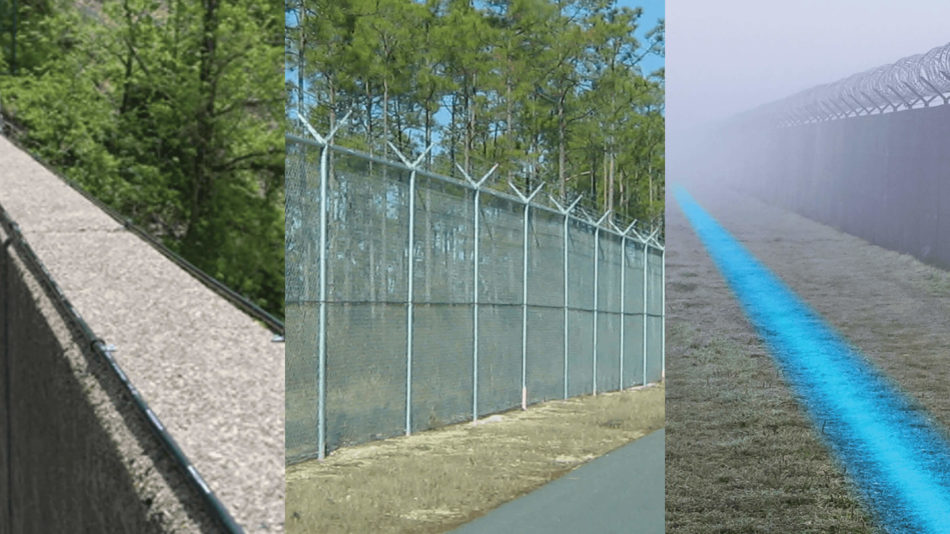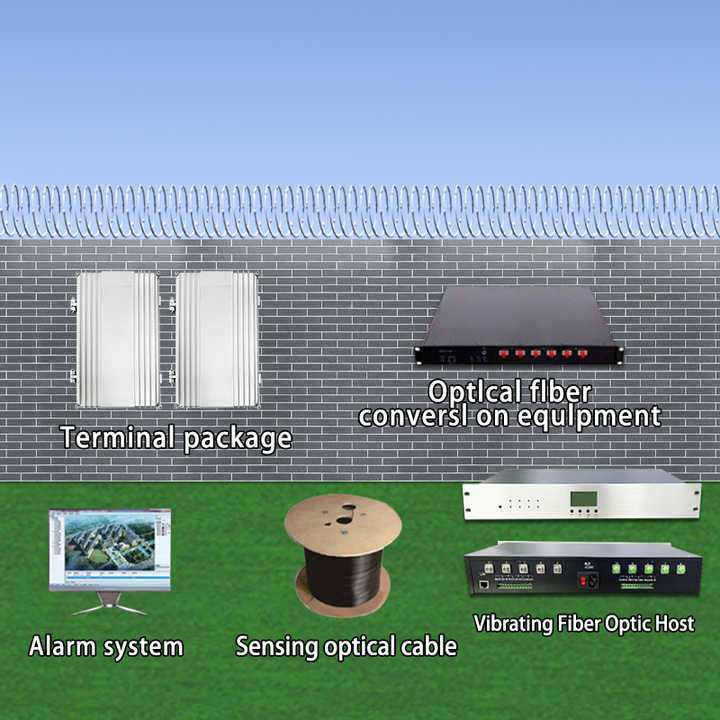How Security Fibers Are Used to Improve the Efficiency of Security Surveillance Systems
Wiki Article
Why Fiber Optic Safety And Security Equipments Are the Future of Protection
The change to fiber optic safety and security systems marks a substantial improvement in the realm of security, driven by their exceptional data transmission abilities and resilience to external disturbances. These systems not only assist in faster and more dependable interaction yet additionally present an economical solution with reduced upkeep needs. As the landscape of safety and security develops along with arising modern technologies such as AI and IoT, the capacity for optical fiber to boost and redefine security frameworks comes to be significantly apparent. Nevertheless, the effects of these innovations elevate crucial inquiries concerning the future of security steps and their effectiveness in an ever-changing atmosphere.Advantages of Fiber Optic Equipments
Among the key advantages of fiber optic systems is their remarkable data transfer ability, which promotes the transmission of big quantities of data over fars away without substantial loss. This particular is especially valuable for security applications that need the continual surveillance and transfer of high-definition video feeds, sensing unit information, and various other important details. Fiber optics can suit the expanding demands of modern security systems, making sure that information stays intact and trustworthy.Additionally, fiber optic wires are much less prone to electromagnetic interference, which can be a considerable problem in settings with different digital tools. This resistance improves the integrity of the data being transferred, thereby decreasing the danger of information breaches or system failures. Additionally, fiber optic systems are inherently extra secure than conventional copper cables, as tapping right into a fiber optic line without detection is exceptionally challenging.
The sturdiness of fiber optic cables also adds to their allure. They are immune to environmental aspects such as dampness and temperature fluctuations, minimizing upkeep costs and raising system durability. Generally, these benefits position fiber optic systems as a robust and efficient option for contemporary safety and security facilities, ensuring trustworthy and secure data transmission.
Improved Information Transmission Rate

The ability to transfer substantial quantities of data rapidly assists in the smooth integration of high-definition video feeds and advanced analytics. Safety systems can currently process and assess details in real-time, improving feedback times and situational recognition. In addition, fiber optic connections support longer transmission distances without degradation of signal quality, making them perfect for extensive safety networks.
The boosted speed of fiber optic systems not just enhances the performance of security operations however likewise decreases latency. This is especially crucial in crucial situations where prompt decision-making can avoid safety and security breaches or mitigate prospective threats. As companies remain to focus on security and efficiency, the demand for fast and trusted information transmission will most certainly strengthen fiber optic systems as a keystone of contemporary safety and security infrastructure.
Resistance to Disturbance
Fiber optic safety systems constantly demonstrate phenomenal resistance to electro-magnetic interference, a crucial advantage in environments vulnerable to digital sound. Unlike conventional copper cables, which can be negatively affected by electro-magnetic fields, radio frequency interference, and various other types of electric disruption, fiber optic cables use light to transfer information. This fundamental residential or commercial property makes sure that the signals remain clear and unchanged, despite bordering digital task.Using glass or plastic fibers in fiber optic modern technology produces an obstacle against disturbance, enabling for trustworthy information transmission even in challenging situations such as commercial facilities, urban areas with high electronic website traffic, or places near radio towers. This particular significantly minimizes the chance of signal deterioration or loss, making fiber optic systems particularly security fibers appropriate for safety and security applications where stability and precision of data are extremely important.
Furthermore, this resistance to interference boosts the overall efficiency and reliability of safety systems, making certain that monitoring and sharp systems work flawlessly. In a globe where security is significantly threatened by sophisticated innovations, the resilience of fiber optic systems sticks out as an essential attribute, enhancing their status as a crucial component of modern safety framework.
Cost-Effectiveness With Time
Substantial expense savings can be accomplished in time with the execution of fiber optic security systems. While the initial financial investment may appear greater contrasted to standard copper-based systems, the lasting financial benefits emerge through reduced operational and upkeep costs (fiber security). Fiber optic cables are naturally more long lasting and less vulnerable to ecological elements, which equates to lower substitute and fixing expenditures over their lifespanIn addition, fiber optic systems call for much less power to operate, which additionally reduces energy costs. Enhanced information transmission abilities enable fewer repeaters and amplifiers, lessening tools investment and simplifying setup processes. The scalability of these systems likewise contributes to cost-effectiveness, as organizations can expand their safety and security infrastructure without incurring substantial added expenditures.
An additional variable to consider is the enhanced effectiveness in surveillance and feedback capacities that fiber optics offer. Boosted real-time information transmission can lead to quicker case reaction times, potentially mitigating losses and obligations connected with safety and security breaches. In amount, the long-term benefits of fiber optic security systems not only justify the first expense but also position them as a monetarily sensible option for organizations seeking robust security options.

Future Innovations in Security
Progressing technologies are readied to transform safety systems, incorporating artificial knowledge (AI) and maker understanding to enhance hazard discovery and feedback capacities. These innovations will certainly allow protection systems to analyze substantial quantities of information in real-time, recognizing patterns and abnormalities that show potential risks. This positive technique will certainly enable faster decision-making and extra effective occurrence feedbacks.In addition, the consolidation of the Net of Points (IoT) is leading the means for interconnected security devices, offering comprehensive security and monitoring. Smart sensors can relay details about environmental modifications, while automated alerts can inform protection employees promptly of questionable activities.
Additionally, the development of biometric innovations will better boost safety mechanisms. Facial recognition, fingerprint scanning, and retina recognition are ending up being extra innovative, offering layers of authentication that are tough to bypass.
Conclusion
Finally, fiber optic safety systems stand for a substantial improvement in protection modern technology, providing unmatched data transmission rate, resistance to electromagnetic disturbance, and long-term cost-effectiveness. As the need for sophisticated safety and security options remains to expand, the integration of fiber optics with arising technologies such as AI, IoT, and biometrics will certainly even more improve safety frameworks (fiber security). The combination of these developments will certainly ensure a much more secure and receptive atmosphere, strengthening fiber optics as a cornerstone of future safety systemsReport this wiki page